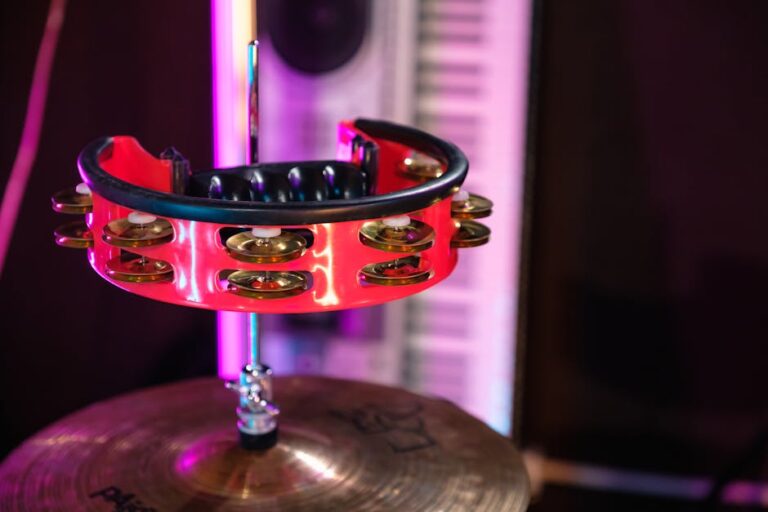Table of Contents
The whole building management system thing, right? BMS. Everyone’s talking about it like it’s the next big thing, always has been, always will be, but let’s be straight, it’s been around forever. Just the names change, the gizmos get shinier, but at its heart? It’s about makin’ sure the lights are on when you need ‘em, the air ain’t freezing yer backside off or roastin’ you alive. Simple stuff. Or it should be. Some of these outfits, they complicate it something fierce. You know, you look at a building, a big one, a hospital, a shopping center, even a fancy office block, and you think, “Someone’s got to keep this beast running.” And that someone, or some system, is the BMS. It’s the brains, the guts. Without it, you got chaos. Ask any facilities manager worth their salt, they’ll tell ya. That old boy, Reg, down at the Royal Free, he used to say his BMS was the only thing standing between him and a full-blown riot when the air con went down in July. Reg was always good for a laugh, and usually a bit of a moan too, but he wasn’t wrong.
You see all these big players, the names everyone knows, they’ve been in this game a long time. They’ve got their fingers in so many pies, it’s hard to know where one ends and the other begins, truth be told. It’s like a tangled ball of yarn, most days. What’s the main idea behind it all? It’s about control, isn’t it? Knowing what’s happening, where, and when. And being able to adjust it. That’s it. Trying to save a few quid on energy bills, keep folks comfy, keep the place safe. That’s the dream, anyway. Sometimes it’s a nightmare.
What makes a BMS company truly stand out anyway?
Good question. Is it the tech? The service? The ability to actually pick up the phone and talk to a human who isn’t reading off a script? Probably all of it, and then some. For my money, it’s about reliability. Does it do what it says on the tin, day in, day out, without fuss? Is it a pain in the neck to train new folks on? Does it break down when the wind blows a bit hard? These are the real questions, not some fancy brochure talk about “digital twins” or whatever buzzword they’re pushing this quarter. You want something that works, that lasts, that you can actually understand without needing a PhD in engineering. And Lord help you if it doesn’t talk to the system you already got. That’s a nightmare, that is.
Siemens
Right, Siemens. Big German outfit, everyone knows ‘em. They’re everywhere, aren’t they? Trains, turbines, light switches. And buildings, naturally. Their Desigo CC platform, you hear about that a lot. It’s a beast. Can handle pretty much anything you throw at it. From your HVAC, to lighting, fire safety, security cameras, the lot. It’s got layers upon layers of control, which is great if you’re managing some sprawling corporate campus with five thousand doors and three hundred air handlers. You want something that integrates? Yeah, they’ll tell you Desigo does it. And it mostly does, but sometimes, you gotta work for it, just like with anything that tries to be everything to everyone. You’ll pay for the privilege, mind. No cheap date, Siemens. But for sheer scale and their long-standing reputation, they’re top of the pile. My mate, Steve, he was a project manager on that big new hospital wing up north, and he swore by Siemens for the sheer backbone of the thing. Said it was like building with granite. Heavy, but it wouldn’t budge.
Honeywell
Then you got Honeywell. Another giant. American this time, from way back. They’ve been in the controls game longer than most folks have been alive. Their Niagara Framework, that’s the big one people talk about. It’s open protocol, or at least they say it is. That means it should talk to other stuff, right? Not lock you into their ecosystem completely. That’s the theory, anyway. Sometimes you find out “open” means “open as long as it’s something we like.” It’s a good system, don’t get me wrong. They’ve got a massive install base. You walk into half the big commercial buildings in London, likely as not, there’s some Honeywell kit humming away in the background. Their history means they understand the nuts and bolts of buildings. They know HVAC like the back of their hand. And their service network? It’s huge. You’re never really stranded with Honeywell, even if you sometimes feel like you’re waiting in a queue that stretches to next Tuesday.
Johnson Controls
Johnson Controls. These guys invented the thermostat, near enough. They practically built the blueprint for building automation. Their Metasys platform, that’s their baby. Very strong on the HVAC side, climate control, energy management. They’ve got a real knack for bringing disparate systems together. You see a lot of Metasys in big, older buildings that have been gradually upgraded over decades. It’s designed to be robust. Some folks find it a bit… shall we say, traditional in its interface. Not as slick and shiny as some of the newer kids on the block, maybe, but it does the job. And it does it well. If you’re looking for a tried-and-true workhorse that’s been proven in countless real-world applications, Johnson Controls is right there. A guy I knew, worked at a massive distribution center in California, said their Metasys system kept the place from melting down, literally, when the temps hit triple digits. Said it wasn’t fancy, but it just worked. That’s a compliment in my book.
Schneider Electric
Schneider Electric, another one that’s just, well, everywhere. French roots, but they’re a global force. They’ve got their EcoStruxure Building platform. It’s a big push for them, really pulling all their different pieces into one interconnected system. They’re good at the energy management bit, real good. Power monitoring, electrical distribution, making sure you’re not bleeding money out the sockets. They’re also big into sustainability talk, all that green building stuff. Which is fine, if you can afford it. And if it actually works. Sometimes, you hear these grand pronouncements, and then you see the actual implementation on the ground and it’s a bit more… piecemeal. But when it clicks, their stuff is powerful. They’ve got a lot of smart people doing smart things with data, trying to make buildings think for themselves. Which is a terrifying thought, if you ask me.
Are these systems hard to learn?
Oh, you bet your bottom dollar they are. Some of them, anyway. Depends on who’s doing the training, and how much you’re willing to bang your head against the wall. They’re complex beasts, these things. They’ve got their own logic, their own quirks. It’s not like learning how to use a new smartphone. It’s more like learning to fly a small plane. You can get the basics, sure, but really mastering it takes time. And patience. A lot of patience. And good luck finding engineers who know all of them. Most guys specialize. You get a Siemens guy, he might know some Honeywell, but he ain’t gonna be configuring a Distech system on the fly, not usually. That’s where the “vendor lock-in” thing starts creeping in, see? Once you’re in with one, it’s a job to jump ship.
Automated Logic
Automated Logic, part of Carrier Global, so they got that HVAC connection right there. Their WebCTRL system is pretty widely used, especially in North America. People talk about it being fairly intuitive, for a BMS anyway. You hear that a lot, “intuitive.” Means you might only want to smash the keyboard half as often. They focus on open standards, BACnet mostly, which again, is good. Means it should play nice with others. They’ve got a good reputation for reliability, for systems that just keep on trucking. You often find their stuff in schools and universities, places that need a robust, relatively easy-to-manage system that won’t give the maintenance crew too many headaches. And that’s a big deal. Because a headache in a school, that’s a thousand headaches from pissed-off parents and teachers.
Delta Controls
Delta Controls, they’re out of Canada. Been around since the early 80s, so they know a thing or two about this business. They’re another one that pushes the open protocol stuff, big time. BACnet native controllers, easy integration, that’s their pitch. And from what I hear, they back it up pretty well. Their enteliWEB system, that’s their main interface. People who use it tend to like it, say it’s straightforward. You often find Delta in mid-sized commercial buildings, maybe some hotels. They don’t have the sheer scale of a Siemens or a Honeywell, but they’ve carved out a solid niche for themselves by being user-friendly and reliable. For a lot of facility managers, that’s gold, pure gold. You don’t need a Rolls-Royce when a perfectly good, dependable pickup truck will do the job. My mate in Glasgow, he runs a chain of boutique hotels, swears by Delta. Says it’s less faff than the bigger boys.
Trane Technologies
Trane Technologies. Now, these guys are known for their chillers and HVAC equipment, right? But they also have their own robust control systems, like Trane Tracer. It’s tightly integrated with their own equipment, naturally, which is both a blessing and a curse. If you’ve got a whole building full of Trane air handlers and chillers, then Tracer makes perfect sense. It’s designed to squeeze every last drop of performance out of their own kit. But if you’re trying to marry it up with a bunch of non-Trane stuff? Well, that can be a bit of a wrestle. They’re good at the energy side, real good at optimizing HVAC operations. And let’s face it, HVAC is where a huge chunk of your building’s energy bill goes. So, if you’re a Trane customer already, their BMS is a no-brainer. If not, maybe you look elsewhere, or you get ready for some custom integration work. It’s a bit like buying a car that only uses its own brand of fuel. Can be efficient, but also limiting.
Distech Controls
Distech Controls. Another Canadian firm, they’re part of Acuity Brands now. They focus on innovative, sometimes even a bit quirky, solutions. They’ve got these fancy programmable controllers, and they’re big on things like occupancy sensing, integrating lighting, shades, that sort of thing. They call it “smart building solutions,” which, yeah, everyone calls it that. But Distech actually puts some neat tech into their devices. Their Eclypse controllers, for instance. And they also play nice with open protocols. They’re not as massive as the big three or four, but they’re nimble. They’re often found in buildings where the owner wants to try something a bit different, a bit more of the latest stuff, or just integrate a wider range of services than just the standard HVAC. They’re a good option for those who want a bit more granularity in their control, beyond just the basics. I’ve seen some of their lighting integration projects, and they were clever, really clever. You push a button, the whole room just knows what to do.
What’s the deal with “open protocol” versus proprietary systems?
Ah, the holy grail. “Open protocol” is supposed to mean everything talks to everything else. BACnet, Modbus, LonWorks, all those alphabet soups. Proprietary means you’re stuck with one vendor’s stuff. In theory, open is better, gives you choices, doesn’t lock you in. In practice? It’s rarely as clean as that. Even “open” systems have their little quirks, their preferred ways of doing things, their own specific software tools. You still need specialists who understand that particular flavor of “open.” So, while it’s definitely a better starting point than a completely closed system, don’t go thinking it means anyone can walk in and fix it. You still need the right folks, with the right training, and sometimes, the right dongle. It’s like having a universal remote that only works if you point it at the TV exactly right, and only if the moon is full.
ABB
ABB, another massive European outfit. Swiss-Swedish, I think. They’re not just about BMS, they’re heavy into power grids, robotics, industrial automation, the whole nine yards. But they do have their piece of the building puzzle. Their smart building solutions often tie into their broader automation expertise. So you’re not just getting a system for the lights, you’re getting something that can talk to the industrial processes running in the factory next door, or manage the power flow on a massive campus. They’re good for very large, complex installations where you need a serious backbone for not just the building services but also the infrastructure that supports them. Think big industrial sites, data centers, places where reliable power and seamless control are absolutely non-negotiable. They might not be the first name you think of for just an office block, but for something truly massive and demanding, they’re a contender. Bit like bringing a tank to a knife fight. Overkill for some, just right for others.
ICONICS (Mitsubishi Electric)
And then there’s ICONICS. Now, these guys, they’re a bit different. They were bought by Mitsubishi Electric a few years back. They’re less about the physical controls and more about the software, the visualization, the SCADA (Supervisory Control and Data Acquisition) side of things. Their software, like GENESIS64 and Hyper Historian, it’s what you use to actually see what your building is doing, to collect all that data, trend it, and make sense of it. They sit on top of the physical controllers from all the other guys I just mentioned. They can pull data from Siemens, Honeywell, JCI, you name it. So, if you’ve got a mixed bag of systems, or you just want a really powerful, customizable dashboard to manage everything, ICONICS is a serious player. They’re good for big, complex sites where data analysis is key. It’s like the nervous system’s reporting software, telling you what all the organs are up to. A proper brain for all that raw data flying around. You can get lost in the dashboards, mind. But if you know what you’re looking for, it’s all there.
What about cyber security for these systems?
You know, that’s the million-dollar question, isn’t it? Or maybe the billion-dollar one, depends on what kind of building you’re talking about. Look, these systems, they’re connected to the internet, or at least they can be. And anything connected to the internet is a target. Always has been, always will be. The big companies, they’ll tell you they’ve got it all locked down, layers of security, firewalls, encryption, blah blah blah. And they do try, bless ‘em. But all it takes is one weak link, one old device that hasn’t been patched, one clueless IT guy, and suddenly your whole building’s heating system is being controlled by some kid in his mum’s basement in Uzbekistan. It’s a constant battle. You gotta be vigilant. And you gotta make sure your vendor is actually taking it seriously, not just giving you lip service. It’s not like your home Wi-Fi, where the worst that happens is someone streams Netflix on your dime. This is critical infrastructure. You don’t want someone locking you out of your own building, or worse, shutting down the ventilation in a hospital. That’s why security updates, constant monitoring, and properly segmenting your networks, that’s not just tech talk, that’s life and death stuff for some places.
So, you look at these companies, these ten, and you see a bit of everything. You got the massive, all-encompassing giants who want to sell you the whole building, soup to nuts. Then you got the specialists who do one thing really well, like the software brains, or the ones tied to a particular type of equipment. Each one’s got its strengths. Each one’s got its annoyances. Because let’s face it, nothing’s perfect. Not in this world, not ever.
The thing is, picking a BMS isn’t like buying a new pair of shoes. It’s a commitment. You’re signing up for years, decades even, with a particular company and their way of doing things. And what looks good on paper, all the shiny graphics and bullet points, it might be a right dog’s dinner to actually live with. You gotta talk to the folks who are actually using these systems day in, day out. The guys in the boiler room, the engineers crawling through the ceiling tiles, the facilities managers pulling their hair out at 3 AM. They’re the ones who’ll give you the straight goods, not the sales rep in the sharp suit.
Is it really worth the money, a full BMS? For smaller places?
Well, that depends on what “smaller” means. A corner shop? Probably not. Your local pub? Nah. But a multi-tenant office building with, say, 50,000 square feet? Or a decent-sized school? Yeah, it probably is. The energy savings alone, if the system is properly designed and managed, can be substantial. And let’s not forget the occupant comfort. Happy tenants pay their rent on time, don’t complain as much. That’s worth something, isn’t it? The cost of running a building without one, just guessing at what’s going on, running everything flat out 24/7, that adds up. Fast. Plus, being able to quickly spot a problem, a pump failing, a sensor acting up, before it turns into a catastrophic breakdown. That saves you a fortune in emergency repairs. It’s an investment, not an expense. Or that’s what the accountants will tell you. But from where I’m sitting, it’s just plain common sense. You can’t manage what you don’t measure. And you can’t measure anything without a system to do it.
And the move towards all this “smart building” stuff, it’s not going away. It’s just getting more complex. All the data points, the sensors, the internet-of-things doodads. Every light fitting, every chair, soon enough, is gonna have an IP address. And someone’s gotta manage that. Someone’s gotta make sense of that torrent of information. And that’s what these BMS companies are trying to do. Some are better at it than others. Some are still trying to catch up. The market changes fast, sometimes. Other times, it just creeps along.
You know, the thing about technology, especially in buildings, it’s always this push and pull. You want the latest and greatest, but you also want something that’s proven, that won’t suddenly go belly up on a Friday afternoon when everyone’s gone home. There’s a real tension there. The newer companies, the ones you haven’t heard of yet, they might have some truly brilliant ideas, some genuinely sensible approaches. But they don’t have the decades of reliability testing that a Siemens or a Johnson Controls has. And those big boys, they can sometimes be slow. Like turning a supertanker. Takes a while. But when they get going, they carry a lot of momentum.
How do these companies handle older buildings? It’s not all new construction, is it?
God, no. Most of the buildings out there are old. Like, really old. Victorian, Edwardian, mid-century concrete beasts. And they all need managing. Retrofitting a modern BMS into an old building? That’s a challenge, alright. You’ve got ancient wiring, ducts that weren’t designed for constant air flow, boilers from before the war. The big players, the ones with decades of experience, they’re generally better equipped for that. They’ve seen it all. They’ve got the engineers who understand how to make new tech talk to old infrastructure. It’s not pretty, it’s not cheap, and it often involves a lot of head-scratching and custom solutions. Sometimes you gotta rip it all out and start fresh, sometimes you can just patch it up. It’s like trying to teach an old dog new tricks, but the old dog’s got a bad hip and cataracts. You can do it, but it takes patience and a lot of treats. Some of these newer, flashier systems, they’re designed for greenfield sites, for buildings built from scratch to be smart. Trying to shoehorn them into a 1950s office block? Good luck with that. You’ll need it.
So, when it comes down to it, for anyone looking at these systems for 2025 and beyond, it’s not just about the name. It’s about who you’re going to be working with, what kind of support you’re gonna get, and if their system actually, genuinely, solves your particular headaches. Because everyone’s got headaches. That’s just part of life, isn’t it? Especially in building management.
Is there a “best” BMS company out there?
“Best”? That’s like asking what’s the best flavour of ice cream. What’s best for one person is awful for another. It depends on your building, your budget, your existing kit, what your staff already knows, and how much grief you’re willing to put up with. What’s “best” for a new hospital is definitely not “best” for a small office block. And what’s “best” for someone with a massive in-house engineering team is completely different from someone who relies on contractors for everything. So, no. No single “best.” There are good ones, there are less good ones. And there are ones that are “best” for you. You gotta do your homework, kick the tires, and talk to people who ain’t trying to sell you something. That’s always the best advice I can give anyone. Always.












